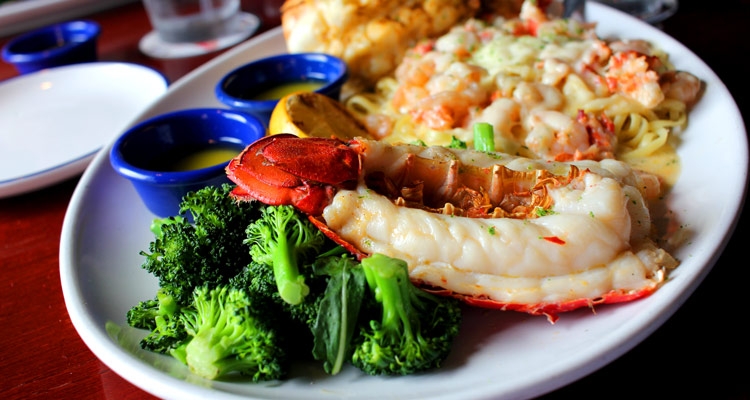There's something magical about lobster, just the mention if it brings visions of wealth, status, and a lifestyle of luxury. As someone who once lived in a lobster town in Massachusetts, lobster was always an affordable luxury - similar in cost to a great pork chop or a nice steak. Even though the cost was equivalent, the mention of lobster meant we were having a special dinner. Years later and on a different coast, that's pretty much how I feel each time I walk into Red Lobster today too.
The concept of being Lobsterworthy is a relatively new notion but that doesn't mean that it is a bad one. When the Pilgrims first landed, New England lobsters were so plentiful that it was considered what the poor people ate. In fact the governor of Massachusetts actually complained in 1623 of only having lobster to serve his visitors. Frankly - it was plentiful and it's an ugly looking animal.
So how did lobster become popular?
A a food that was so cheap and plentiful, it attracted the attention of the canning industry and starting in the 1840s it began to be one of the most popular canned foods for those Americans not living on the coast. As a result, canneries continued to promote and romanticize this once despised food. Likewise, due to it's cheap nature railroads began to serve it to customers who (not knowing any better) loved it, leading to restaurants beginning to serve it as something much elevated from its previous regional connotation. Without this negative perspective of lobster being a "sea insect" and a food that was so plentiful that people would feed it to their servants and pets, it began to become popular. By 1885, the American lobster industry was producing 130 million pounds of lobster each year.

As you can imagine, that level of fishing wasn't sustainable and in 1918, only 33 million pounds were taken due to the population having declined so badly due to over fishing. This erosion of supply combined with an insatiable appetite lead to a rapid rise in price during the "Roaring '20s". During the Great Depression and World War II though, lobster fell out of favor again as a luxury item since people simply couldn't afford it as a luxury meal though it was one of the few items not rationed and in fact was canned and sent to soldiers over seas.
After the war, with GI's coming back with a taste of lobster, Hollywood stars enjoying lobster, and generally a once again affluent country the lobster became cemented in the American culture as an icon of luxury, status, and generally something worth celebrating.

That continues today and frankly I can't think of any other food that enjoys this level of popularity. When you think about it, a Lobster isn't really that much more expensive than a good filet or a juicy Berkshire pork chop but it's certainly something special.
Just the act of it arriving at your table has that immediate, visceral sense of "heck yeah!" that tells you and your guests that something special is about to happen. In fact, there's really only one word that I can think of to describe that moment ... Lobsterworthy!

What are your lobsterworthy moments in life that you'd want to celebrate with an awesome dinner at Red Lobster? Share them using the hashtag #Lobsterworthy and let's do something special together!
